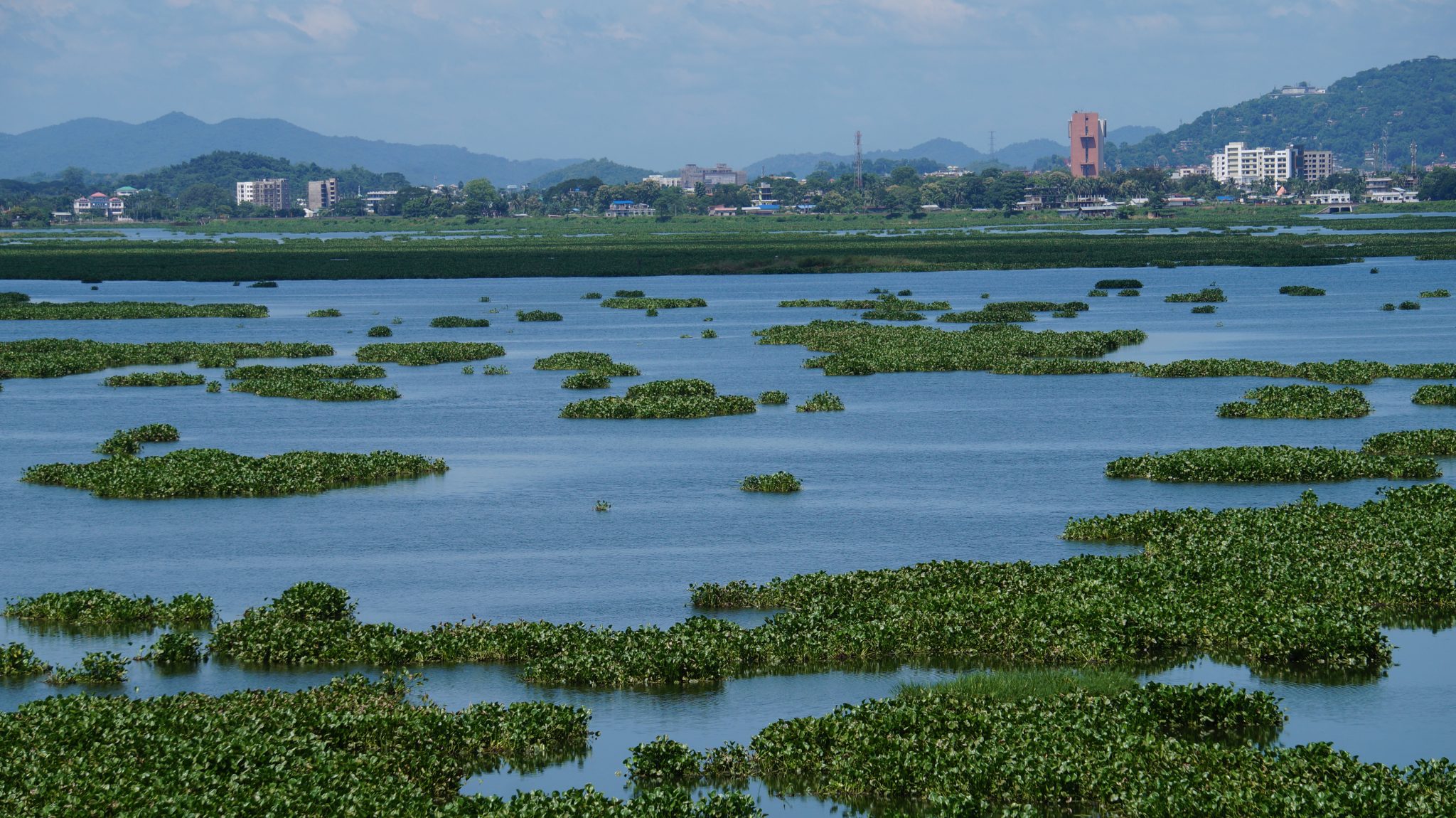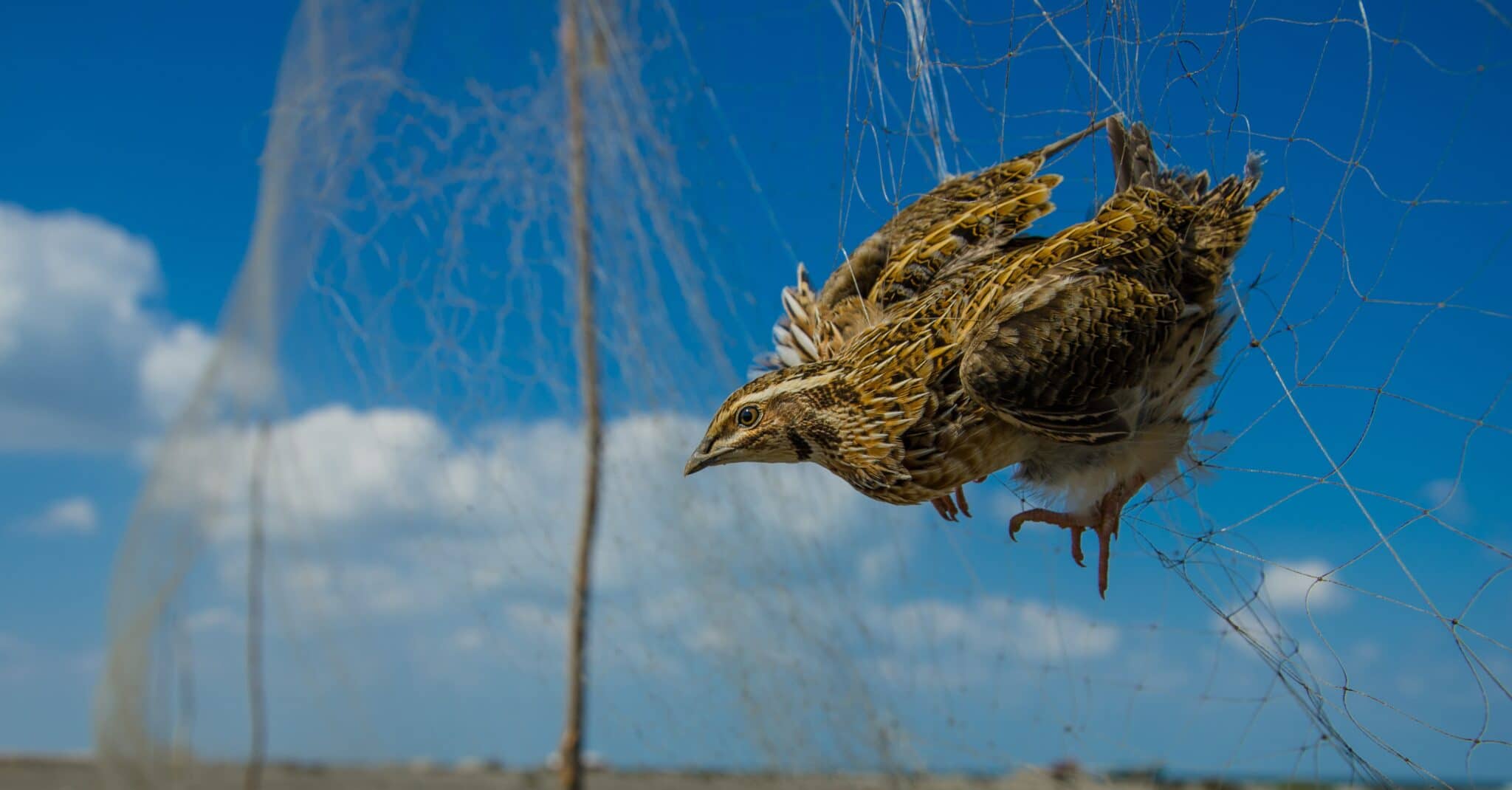Second chance for Cambodia’s big birds
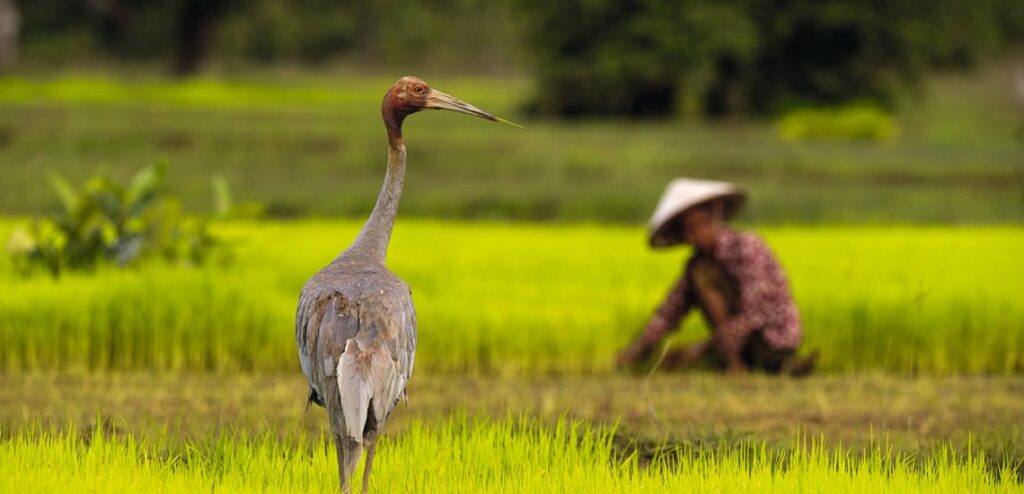
For a suspenseful three years, Lomphat Wildlife Sanctuary seemed doomed. But now, changed policies, changed hearts and a new organic rice scheme promises hope for the forest landscape’s villagers, businesses and giant birds.
By Cressida Stevens
“What’s happening to my home?” If birds think rationally (and there’s evidence to suggest they can) then this thought may have been in the heads of a family of Sarus Cranes as they stood, powerless, watching monster machinery tear up their habitat. Sovannarith Thol was at the scene a few years ago: “Many people know that habitat loss is the biggest cause of extinction, but they are distanced from the reality,” says the Lomphat Wildlife Sanctuary Project Manager from the BirdLife Cambodia Programme. “Seeing birds witness this destruction in front of their eyes made it painfully real.”
Sarus Cranes Antigone antigone (Vulnerable) are spectacularly impressive; reaching up to six feet tall with a wingspan of about eight feet, they are the world’s tallest flying birds. And at Lomphat Wildlife Sanctuary in Cambodia, they’re in good company: birds here are big. Also stalking through the marshes are Greater and Lesser Adjutants Leptoptilos dubius and Leptoptilos javanicus, (Endangered and Vulnerable) and Green Peafowl Pavo muticus (Endangered), imposing in their own foreboding and beautiful ways and all standing at over a metre tall.
Other hefty birds such as the White-shouldered Ibis Pseudibis davisoni (Critically Endangered) and the Giant Ibis Thaumatibis gigantea (Critically Endangered) – Cambodia’s national bird – perch implausibly in the surrounding trees. At such gargantuan sizes you’d think they’d be easy to spot but, as you’ve likely noticed, all of these species are threatened and their numbers low.
At 250,000 ha, Lomphat Wildlife Sanctuary is one of Cambodia’s biggest protected areas, thus able to cater for these bumper-size birds, and consists of largely intact forest dotted with trapaengs (seasonal water holes), a favourite spot for species such as the Giant Ibis, White-shouldered Ibis and Sarus Crane to find food. The local people too, depend upon the forests for all that they need. There are 26 villages in and around the landscape, reliant on rain-fed rice, water from the forest’s rivers and its fish for their protein. So long as the human population here is stable, people and nature live in harmony. But recent changes have disturbed the equilibrium.
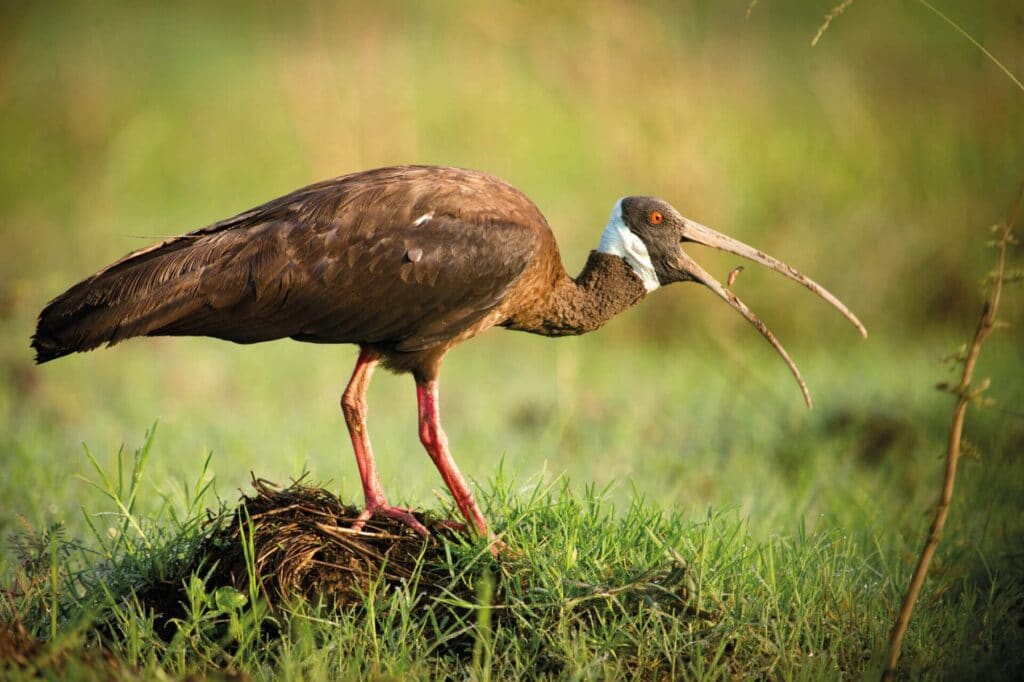
In 2010, the government of Cambodia introduced a new land-use policy known as an Economic Land Concession (ELC), a recurring threat across the country that allows private sector companies to convert native forests into industrial plantations of banana, rubber and other cash crops. Soon, the tranquil rustling of rice paddies in the wind and gurgle of Lomphat’s life-sustaining rivers was torn through by the rip of chainsaws, screech of diggers, and boom of trunks surrendering to the forest floor. And as large chunks of forest fell, so did Lomphat’s bird populations. Thankfully, that’s not where the story ends. A turning point came in 2013 when the Cambodian government agreed to throw a lifeline to Lomphat and give BirdLife the mandate to protect it in the long-term.
A key to this has been ‘zoning’ the sanctuary into a mosaic of areas. A core zone and conservation zones have ranger patrols to protect especially crucial areas, and in community zones, people are supported to use natural resources sustainably. The land converted by private companies under the ELC represent about 20% of the landscape, where they are permitted to continue producing commodities like dragon fruit and bananas but with much stricter limits.
BirdLife’s Cambodia Programme now works to safeguard the remaining biodiversity, with a focus on three priority species: Giant Ibis, White-shouldered Ibis and Sarus Crane. But they cannot achieve this alone. To ensure Lomphat’s survival, BirdLife Cambodia is working with local people and the government so resources are used sustainably and forest degradation can be ended.
A priority was working with the concession workers. The existing private sector farms brought an influx of workers who initially, having migrated from lowland Cambodia, didn’t have an innate connection and concern for the land. Many carried out illegal activities such as placing traps and snares to hunt wildlife, and combatting this has not been easy. “When we ask the concession workers not to enter the habitat, some follow and respect the advice but others understandably say ‘we need to find food’”, explains Sovannarith. “The problem is that although they mostly want to catch small birds, the snares are not discriminate.”
A few years after the ELC was ended, Lomphat’s biodiversity suffered another heavy blow. Lomphat used to host three species of Critically Endangered vulture: Red-headed Sarcogyps calvus, Slender-billed Gyps tenuirostris and White-rumped Gyps bengalensis. However, in 2016, an ELC worker was found responsible for a poisoning event near the ‘vulture restaurant’ (where carcasses are brought for the birds to feed on). Since then, only Red-headed have been recorded in the area. Still, despite such a devastating setback, there is so much left to protect at Lomphat.
With his team, Sovannarith has been working with the companies’ managers to educate the workers including holding events screening a video showcasing the unique biodiversity of the landscape. Many have changed their ways, with ex-trappers now working with BirdLife and the police to report snares in the forest.
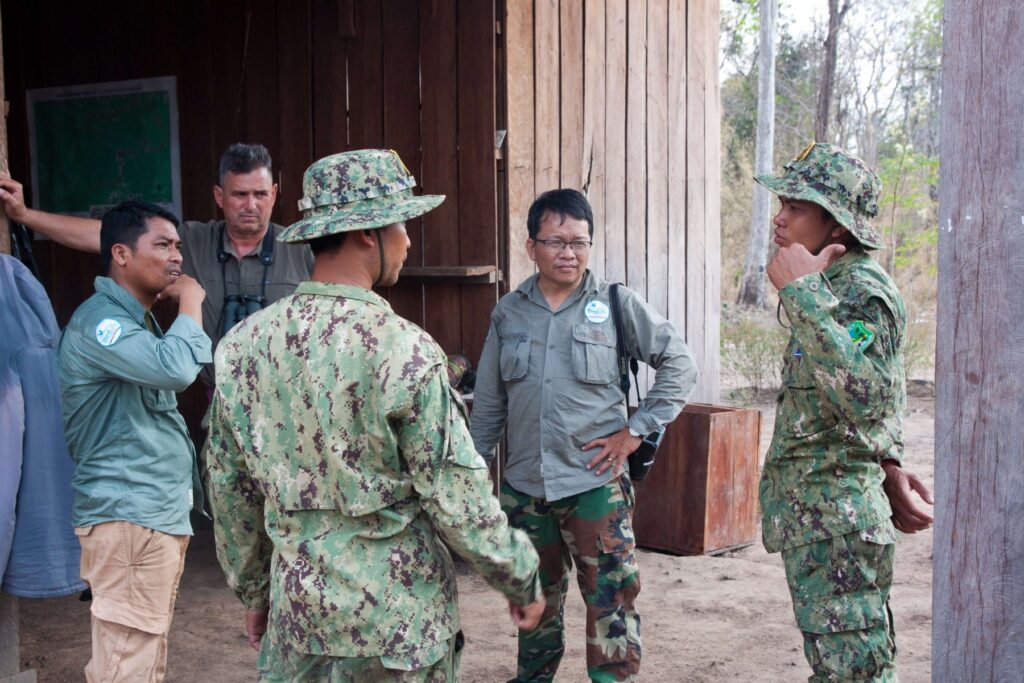
Around the villages, encroachment upon the forest to expand agricultural activities is a major problem, but the communities here are among the poorest in all Southeast Asia so they need support and incentives to change their lives and wellbeing. They grow crops to sell such as rice, mango and cashew, but market prices fluctuate and cannot provide a secure income. Over the years, more and more have resorted to illegal activities such as logging and poaching. BirdLife’s work therefore aims to account for the needs of both nature and people by putting sustainable livelihood alternatives high on its agenda, such as incentivised forest-friendly farming techniques like IBIS Rice (see below).
Now, through persistent environmental education, local people have come to see the benefits of biodiversity and become passionate about the cause for themselves. The Cambodian government approved a Community Protected Area (CPA), in which communities monitor, patrol and manage access to the land’s resources sustainably. BirdLife works closely with them: “Before we worked with the community, a lot of illegal activity happened in the CPA but now there is almost none”, says Sovannarith. “They protect their forest well; they find nests and roosts, they take part in bird censuses, they join us for every activity.”
Communities are spreading the word on their own accord and even going into local primary and secondary schools to educate the next generation on the value of nature and conservation – something not yet on the school curriculum in Cambodia. Additionally, farmers have direct contact with BirdLife and willingly report nesting and sightings of the three priority bird species in their rice fields.
It’s the people-positive work that gives hope for Lomphat and will enable its big birds to rebound across the landscape. The future of our planet depends upon people understanding our connection to nature: looking around, confronting each other and asking, “what’s happening to our home?”
Ibis Rice
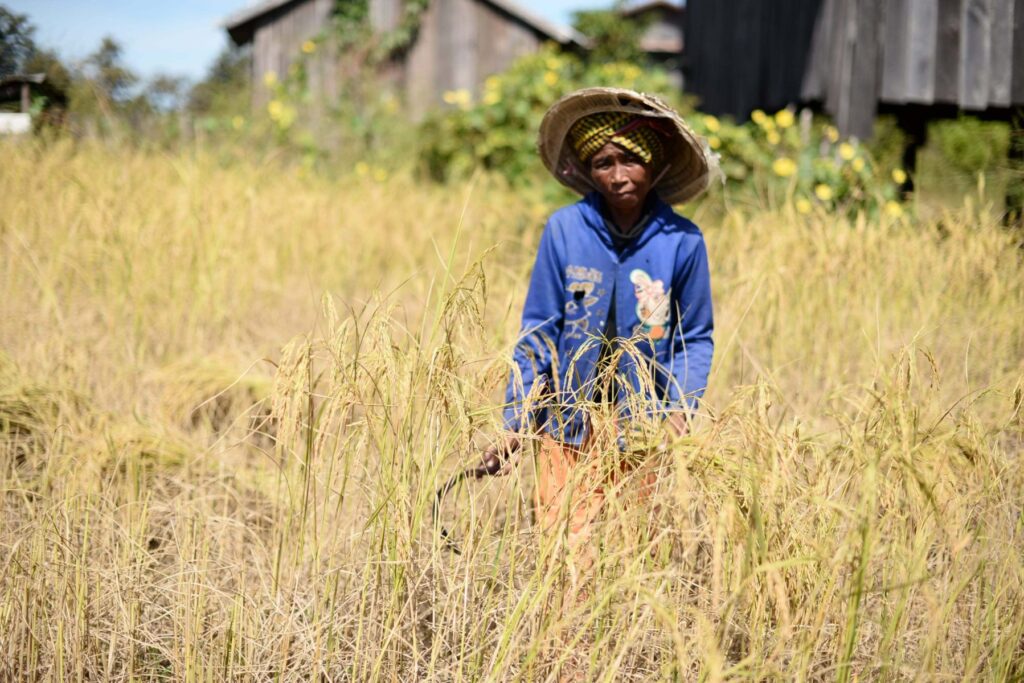
To improve the income of local people whilst having a positive impact on the local environment, BirdLife invited IBIS Rice to Lomphat after seeing its success in another of BirdLife’s priority sites in Cambodia, Western Siem Pang Wildlife Sanctuary. IBIS rice is a wildlife-friendly rice project whereby farmers agree not to hunt, log or encroach upon the forest and grow their crop organically, in return for receiving a premium price for their rice. Originally developed in 2009 by WCS (now a Trillion Trees partner with BirdLife), the scheme is now operated by the IBIS Rice Conservation Co. Ltd, who have carried out a feasibility study in partnership with BirdLife (using funding from the BirdLife Forest Landscape Sustainability Accelerator) and are now introducing it at Lomphat Wildlife Sanctuary, with continued support from the Accelerator.
This work is part of the Trillion Trees vision. Find out more, and about BirdLife’s partnership with WCS and WWF at trilliontrees.org
